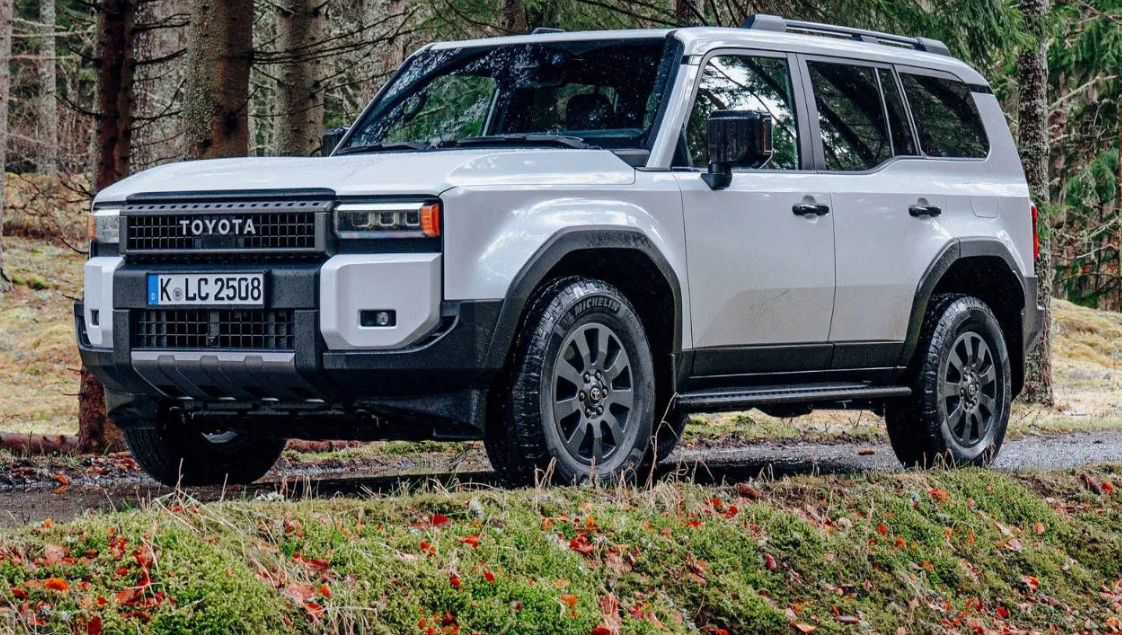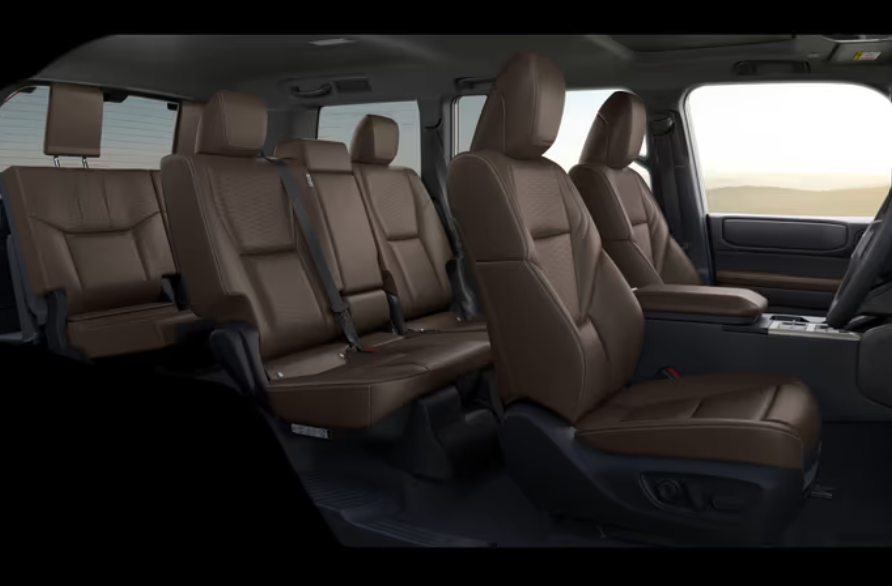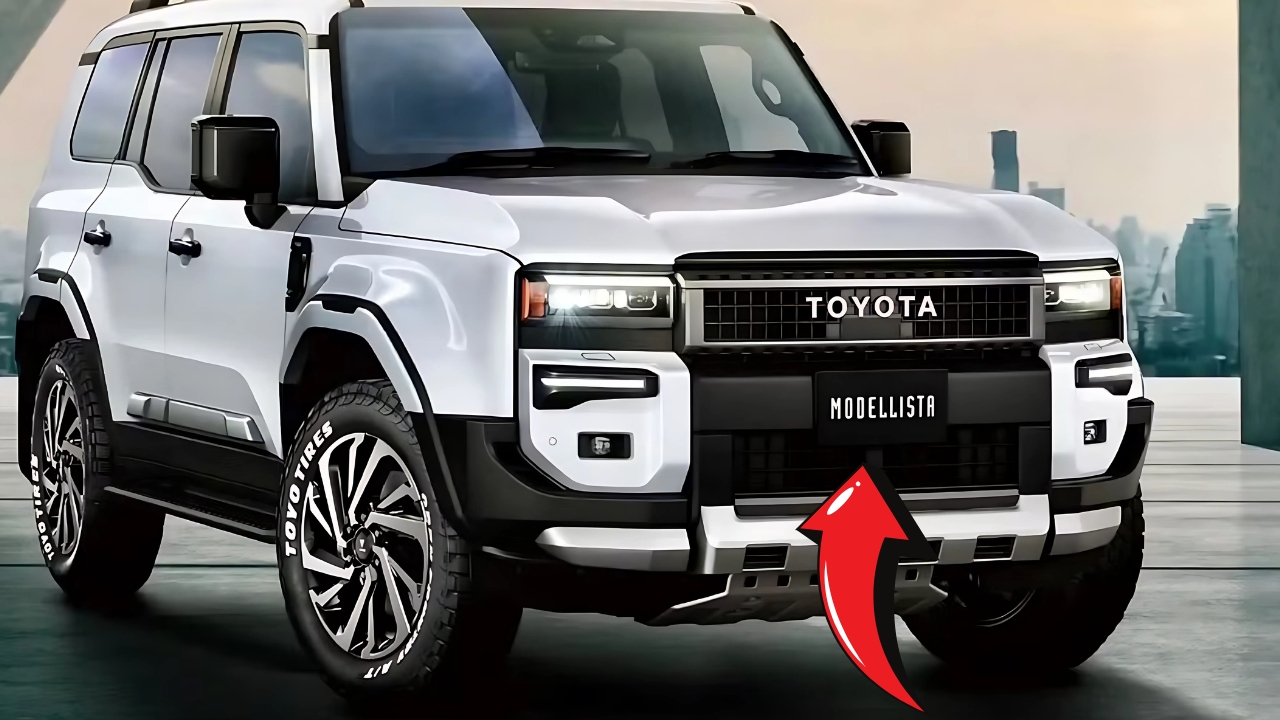Toyota Prado hybrid : The automotive landscape experienced a significant milestone in May 2025 when the Toyota Prado achieved remarkable sales success, delivering 2,732 units to eager customers across Australia.
This impressive performance positioned the Prado as the undisputed leader in the large SUV segment under $80,000, showcasing how strategic technological advancement can translate into tangible market success.
The Revolutionary 48-Volt Mild-Hybrid System
The cornerstone of the Prado’s recent success lies in its innovative mild-hybrid technology, which represents a significant evolutionary step for Toyota’s legendary off-road SUV. The 2025 Toyota LandCruiser Prado introduces a sophisticated 48-volt mild-hybrid system that works seamlessly with the established 2.8-liter four-cylinder turbo-diesel engine.
This mild-hybrid system operates through a belt-driven motor-generator that provides crucial assistance during acceleration while capturing energy during deceleration. The system includes a 48V battery, motor generator, and DC/DC converter that work together to reduce strain on the engine’s ancillary functions. While the hybrid system doesn’t increase the engine’s peak power output of 150kW or torque rating of 500Nm, it delivers noticeable improvements in fuel efficiency and driving smoothness.
The hybrid assistance provides an additional 8.4kW of power and 65Nm of torque during initial acceleration, making the Prado feel more responsive in stop-and-start traffic situations. This technology also enables a more refined idle-stop system that seamlessly shuts off the engine when stationary, contributing to improved fuel economy in urban driving conditions.
Technical Specifications and Performance Enhancements
Engine and Powertrain Details

The heart of the 2025 Prado remains the proven 1GD-FTV 2.8-liter turbo-diesel engine, now enhanced with V-Active mild-hybrid technology. This powerplant generates 150kW of power at 3,000-3,400 rpm and delivers 500Nm of torque between 1,600-2,800 rpm. The engine pairs with a newly developed eight-speed Direct Shift automatic transmission, replacing the previous six-speed unit.
The new transmission represents a significant improvement over its predecessor, delivering crisper, cleaner shifts that enhance both acceleration from standstill and overtaking performance. The eight-speed configuration allows the engine to operate more efficiently across a broader range of driving conditions, contributing to the vehicle’s improved fuel economy rating of 7.6 liters per 100 kilometers under laboratory testing conditions.
Advanced Drivetrain Technology
The Prado maintains its reputation for exceptional off-road capability through a sophisticated full-time four-wheel-drive system. The drivetrain features a 40:60 front-to-rear torque split under normal conditions, with a locking center differential available for challenging terrain. Low-range gearing ensures the vehicle can tackle steep inclines and technical off-road sections with confidence.
For 2025, Toyota has increased the Prado’s braked towing capacity to 3,500 kilograms, representing a substantial 500kg improvement over the previous generation. This enhancement matches the capabilities of key competitors like the Ford Everest, making the Prado more versatile for customers who need serious towing capability.
Market Performance and Sales Analysis
May 2025 Sales Achievement
The Prado’s outstanding May 2025 sales performance of 2,732 units demonstrates the market’s enthusiastic response to the mild-hybrid technology and overall vehicle improvements. This achievement positioned the Prado significantly ahead of its closest competitor, the Ford Everest, which recorded 2,369 sales during the same period.
The sales success becomes even more impressive when considering the broader market context. Australia’s new vehicle sales landscape experienced mixed results in May 2025, with overall deliveries showing some decline compared to the previous year.
Despite these challenging conditions, the Prado’s strong performance highlighted consumer confidence in Toyota’s hybrid technology and the SUV’s proven reliability.
Competitive Landscape
The large SUV segment under $80,000 proved highly competitive in May 2025, with several manufacturers vying for market share. The Prado’s leadership position ahead of the Ford Everest and Isuzu MU-X (1,643 units) demonstrates the effectiveness of Toyota’s mild-hybrid strategy in differentiating the vehicle from conventional diesel-only competitors.
Interestingly, the premium large SUV segment above $80,000 showed different dynamics, with luxury European brands like BMW X5 (475 units) and Land Rover Defender (365 units) capturing smaller but profitable market shares. This segmentation highlights the Prado’s sweet spot in offering premium capabilities at a more accessible price point.
Environmental Impact and Efficiency Improvements
Emissions Reduction Technology
The 2025 Prado introduces several environmental technologies designed to reduce its ecological footprint. The mild-hybrid system contributes to lower CO2 emissions through improved fuel efficiency and reduced engine load during acceleration. Additionally, the Prado becomes the first Toyota vehicle in Australia to require AdBlue diesel exhaust fluid for operation.
The AdBlue system uses selective catalytic reduction technology to break down nitrogen oxide emissions in the exhaust stream. The 17.4-liter AdBlue tank requires refilling approximately every 8,500 kilometers, representing a small maintenance consideration for the significant environmental benefits achieved.
Real-World Fuel Economy
While Toyota claims a fuel consumption figure of 7.6 liters per 100 kilometers under controlled laboratory conditions, real-world testing suggests figures closer to 10.1-10.2 liters per 100 kilometers. This difference reflects the challenging nature of Australian driving conditions, which often include significant urban driving, highway cruising, and off-road adventures that weren’t part of the laboratory testing protocol.
The mild-hybrid system’s greatest fuel economy benefits become apparent in stop-and-start urban driving, where the electric assistance reduces the engine’s workload during frequent acceleration events. The idle-stop system also contributes meaningfully to fuel savings during extended periods in traffic or at traffic lights.
Design and Practical Considerations
Heritage-Inspired Styling

The 2025 Prado embraces Toyota’s heritage design philosophy, drawing inspiration from iconic LandCruiser models including the 70 Series and FJ40. The distinctive front grille features prominent “TOYOTA” lettering, while square headlights and robust fender flares emphasize the vehicle’s off-road pedigree.
This design approach successfully balances modern sophistication with the rugged aesthetic that LandCruiser customers expect. The result creates immediate visual recognition while signaling the vehicle’s serious off-road capabilities to potential buyers.
Interior Space and Flexibility
The Prado offers impressive interior flexibility with five-seat and seven-seat configurations available across different trim levels. The GXL, VX, and Kakadu variants feature seven-seat layouts, while the base GX model accommodates five occupants with additional cargo space.
However, the introduction of the 48V battery system has created some practical compromises. The battery’s position under the boot floor raises the cargo area height, which particularly affects seven-seat models where the third-row seats cannot fold completely flat with the boot floor. Toyota addresses this limitation with a removable plastic storage box that creates a level load surface.
Pricing Strategy and Market Positioning
Trim Level Offerings
The 2025 Prado launches with a comprehensive range of trim levels designed to capture different market segments. The entry-level GX model starts at $72,500, representing a $9,670 increase over the outgoing 150 Series. Despite this price increase, the improved technology and capabilities justify the premium for most buyers.
Higher trim levels include the GXL ($79,990), VX ($87,400), and flagship Kakadu ($99,990), with the returning Altitude variant priced at $92,700. Each trim level offers distinct equipment levels and styling elements, allowing customers to select the configuration that best matches their needs and budget.
Value Proposition Analysis
The Prado’s pricing strategy positions it as a premium offering within the large SUV segment while remaining more accessible than luxury European alternatives. The mild-hybrid technology, increased towing capacity, and improved refinement justify the price premium over the previous generation, particularly for customers prioritizing long-term ownership and reliability.
Manufacturing and Availability
Production and Delivery Timelines
Toyota has demonstrated strong commitment to Australian market demand, with approximately 27,000 Prado units planned for delivery during the first 12 months of availability. This substantial allocation should help minimize waiting times, which have plagued many vehicle segments in recent years.
The strong production commitment, combined with over 17,000 advance orders already received, positions the 2025 Prado to potentially set new sales records throughout 2025. This success could help the model reclaim its position as Australia’s top-selling large SUV from the Ford Everest.
May 2025 Large SUV Sales Data
| Vehicle Model | Units Sold | Category | Price Range |
|---|---|---|---|
| Toyota Prado | 2,732 | Large SUV Under $80k | $72,500 – $79,990 |
| Ford Everest | 2,369 | Large SUV Under $80k | Competitive |
| Isuzu MU-X | 1,643 | Large SUV Under $80k | Competitive |
| BMW X5 | 475 | Large SUV Over $80k | Premium |
| Land Rover Defender | 365 | Large SUV Over $80k | Premium |
| Toyota LandCruiser | 2,040 | Upper Large SUV Under $120k | $120,000+ |
Frequently Asked Questions
Q: What makes the 2025 Prado’s mild-hybrid system different from a full hybrid? A: The mild-hybrid system assists the diesel engine but cannot power the vehicle independently. It provides 8.4kW of additional power during acceleration and captures energy during deceleration, primarily improving fuel efficiency and smoothness rather than enabling electric-only driving.
Q: How often does the AdBlue system need refilling? A: The 17.4-liter AdBlue tank typically requires refilling every 8,500 kilometers, depending on driving conditions. This represents a new maintenance requirement for Prado owners but contributes significantly to reduced emissions.
Q: Does the mild-hybrid system affect the Prado’s off-road capabilities? A: No, the mild-hybrid system actually enhances off-road performance by providing smoother power delivery and improved low-speed control. The system works seamlessly with the vehicle’s traditional four-wheel-drive systems and off-road modes.
Q: Why did Toyota choose mild-hybrid over full hybrid technology? A: Mild-hybrid technology offers the ideal balance of improved efficiency, reduced complexity, and maintained towing capacity. It preserves the Prado’s core strengths while addressing environmental concerns and fuel economy expectations.
Future Outlook and Market Implications
The Toyota Prado’s exceptional May 2025 sales performance demonstrates the market’s readiness for electrified SUV technology, even in mild-hybrid form. This success validates Toyota’s strategic approach of introducing hybrid technology gradually while preserving the essential characteristics that make the Prado appealing to traditional SUV buyers.
The strong sales figures suggest that Australian consumers appreciate the environmental benefits of mild-hybrid technology without sacrificing the towing capacity, off-road capability, and reliability they expect from the LandCruiser family.
This trend likely influences other manufacturers to accelerate their own electrification strategies for large SUV segments.
As the automotive industry continues evolving toward greater electrification, the Prado’s success story provides a blueprint for how traditional SUV manufacturers can satisfy both environmental regulations and customer expectations.
The May 2025 sales achievement of 2,732 units represents more than just commercial success—it signals a successful transition toward more sustainable SUV technology that customers genuinely embrace.

